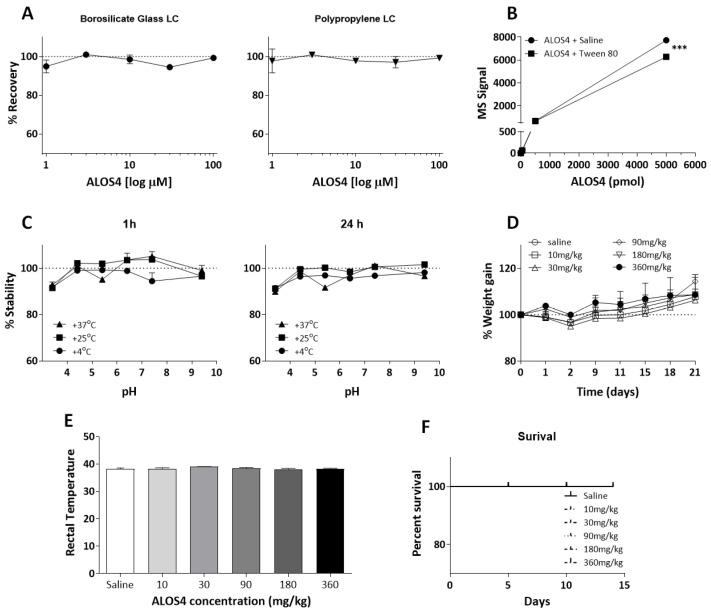Figure 4.
ALOS4 inert materials adherence, pH stability, temperature stability, safety, and toxicity. (A–C) LC-MS analysis of ALOS4 recoverability following inert materials exposure and storage under different pH, temperature, and formulation time conditions. (A) ALOS4 does not adhere to borosilicate LC glass vials or polypropylene LC vials at concentrations up to 100 µM. Data represent mean ± SEM (n = 3). (B) ALOS4 showed optimal stability in standard saline solution (0.9% NaCl) in comparison with saline containing 0.1% Tween-80 at concentrations of 0.5, 5, 50, 500, or 5000 pmol/µL ALOS4 incubated for 60 min at 25 °C in standard polypropylene tubes. Data represent mean ± SEM (n = 3), *** at p < 0.001. (C) ALOS4 demonstrates stability in a variety of pH and temperature conditions. ALOS4 (10 µM) was incubated in standard polypropylene tubes under different pH conditions at and stored at 4, 25, or 37 °C for 1 or 24 h. Data represent mean ± SEM (n = 3). (D,E) ALOS4 shows no effect on ICR mouse (D) body weight or (E) body-temperature following repeated IV administration at 10, 30, 90, 180, or 360 mg/kg ALOS4 (n = 5). Weight-gain of mice was measured three times per week, one hour prior to ALOS4 injections. Percent of weight change was calculated according to baseline weight prior to treatment. Body temperature was measured 30 min after ALOS4 administration. (F) ALOS4 repeated doses (10, 30, 90, 180, or 360 mg/kg) administrated intravenously for 14 days did not affect survival of ICR mice (n = 5).

